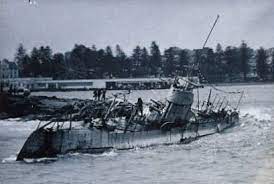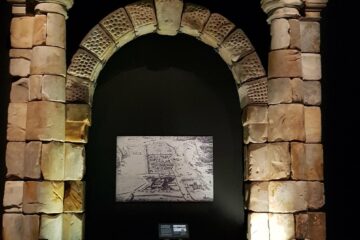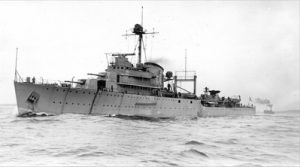
The 7th Fleet was formed on March 15, 1943 in Brisbane, Australia, during World War II. It served in the South West Pacific Area (SWPA) under the control of General Douglas MacArthur, and the 7th Fleet commander also served as commander of Allied naval forces in the SWPA. This was the beginning of the now famous US Seventh Fleet. At its formation, it was a small, multinational force.
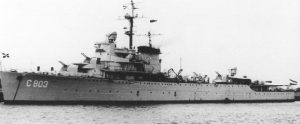
The new fleet comprised US, Australian and Dutch warships. Its heaviest surface units were cruisers (Chicago, Australia, Hobart, Adelaide, Tromp, Jacob Van Heemskerck).
Two-thirds of the cruisers were Dutch. The 7th Fleet included two Royal Netherlands Navy (RNN) destroyers, two RNN submarines and a RNN minesweeper. A Dutch liaison officer Commander A.A. Fresco was appointed to the 7th Fleet’s staff in San Francisco.
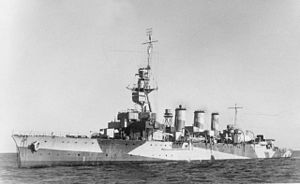
Most of that transport shipping for the fleet was done with Dutch merchant ships from the Koninklijke Paketvaart-Maatschappij – KPM (Royal Packet Navigation Company). General MacArthur specifically mentioned the effort of these Dutch merchants. The KPM came out of the war badly battered. She lost 96 ships, killing about 1,000 people.
However, although part of the 7th Fleet, there were few chances for the RNN to gain military glory as most of its warships were allotted to the Indian Ocean. After the Japanese carrier raid on Ceylon in April 1942, the Indian Ocean was a strategic backwater for both the Japanese and Allied navies. The warships based at Fremantle were in an operational area where there was little opportunity to attack the enemy and retrieve military honour.
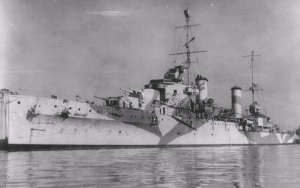
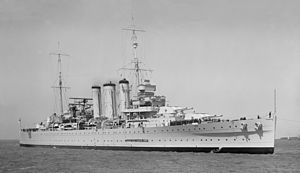
From September 1942 to January 1944, the RNN was largely occupied with the important but unspectacular task of escorting Indian Ocean convoys. The RNN warships were unable to act as independent units in pursuit of Dutch interests while under the control of Rear-Admiral Lockwood (US Navy – USN).
Few Australians know of the RNN wartime presence and that in late 1942 the RNN provided the bulk of the Allied naval strength guarding a vast area from Darwin to Perth. After 23 September 1942, when Voyager was lost, Van Galen and Tjerk Hiddes were the only destroyers left to Lockwood. It is ironical that the Dutch were called upon to defend the very shores where 300 years before, their ships had been driven onto reefs, thereby contributing the first pieces of knowledge about Australia.

